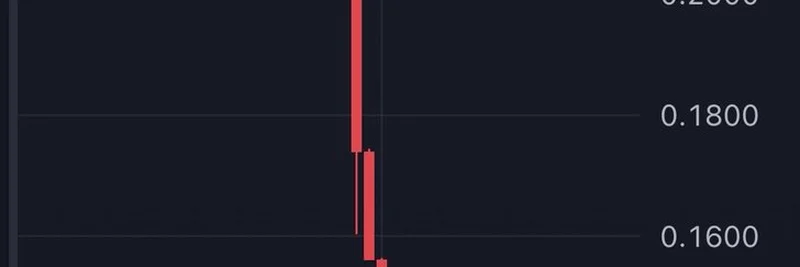In the fast-paced world of blockchain and meme tokens, launches can make or break projects overnight. A recent thread on X by crypto analyst @jussy_world sheds light on the turbulent start of HyperSwap, a decentralized exchange (DEX) built on the HyperEVM chain. If you're farming airdrops or eyeing meme tokens on emerging ecosystems, this story is a cautionary tale about volatility, insider deals, and community backlash.
For those new to the scene, HyperEVM is an EVM-compatible layer built on top of Hyperliquid, a popular perpetuals trading platform known for its native token HYPE. HyperEVM allows developers to build Solidity-based apps with seamless integration to Hyperliquid's order books, making it a hot spot for DeFi and potentially meme token projects. HyperSwap, as the first native automated market maker (AMM) on HyperEVM, was positioned as a key player in this ecosystem.
The HyperSwap TGE Rollercoaster
The drama kicked off on Monday with HyperSwap's Token Generation Event (TGE)—that's the moment when the project's token, SWAP, officially launches and becomes tradable. It debuted at a fully diluted valuation (FDV) of $24 million. FDV is essentially the market cap if every token in the total supply was circulating right away.
But things went south quickly. Within the first few hours, SWAP's price cratered by 60%, dropping the FDV to around $11 million. This kind of post-launch dump isn't uncommon in crypto, especially with hyped airdrop projects, but it highlights the risks of jumping into new tokens without due diligence.
The chart above, shared in the thread, shows the SWAP token (paired against WHYPE, likely a wrapped version of HYPE) plunging from highs around 0.28 to lows near 0.10 in a matter of hours. Volume spiked initially but tapered off as the price stabilized lower.
KOL Wallets Get Doxxed
What really stirred the pot was the exposure of 47 wallets belonging to Key Opinion Leaders (KOLs)—influencers and thought leaders in crypto who often get early access to deals. According to the thread, these KOLs invested in SWAP at much lower FDVs, ranging from $4 million to $15 million. This means they got in cheap, potentially profiting by selling high during the TGE hype.
Someone in the community doxxed these wallets, linking them to prominent X accounts. This kind of transparency (or witch hunt, depending on your view) is common in blockchain, where on-chain data is public. It raises questions about fair launches and whether KOL allocations dilute value for regular users farming airdrops.
The image above captures part of the list, showing wallet addresses tied to handles like @0xFastLife and @Crypto_McKenna. It's a reminder that in DeFi, your transactions are forever on the blockchain—great for accountability, but risky if you're an insider.
Implications for Meme Tokens on HyperEVM
At Meme Insider, we focus on how these events ripple through the meme token space. HyperEVM has been buzzing with airdrop opportunities, from projects like Unit and Kinetiq (rated S-tier in some guides) to lending protocols like Hyperlend. While HyperSwap itself isn't a pure meme token, its AMM infrastructure supports trading meme coins on the chain, and the airdrop farming meta often overlaps with memetic hype.
This incident could cool enthusiasm for HyperEVM airdrops, especially if perceived as "KOL farming" where influencers get preferential treatment. On the flip side, it might push projects toward more community-focused distributions. If you're farming on HyperEVM, tools like HyperSwap's liquidity pools or broader guides on Hyperliquid airdrops can help you navigate safely.
Threads like this one underscore the importance of researching tokenomics, vesting schedules, and community sentiment before aping in. In the meme token world, where virality drives value, transparency can be the difference between a moonshot and a rug.
What do you think— is this just typical crypto volatility, or a sign of deeper issues in airdrop ecosystems? Check out the full thread here and join the discussion.



